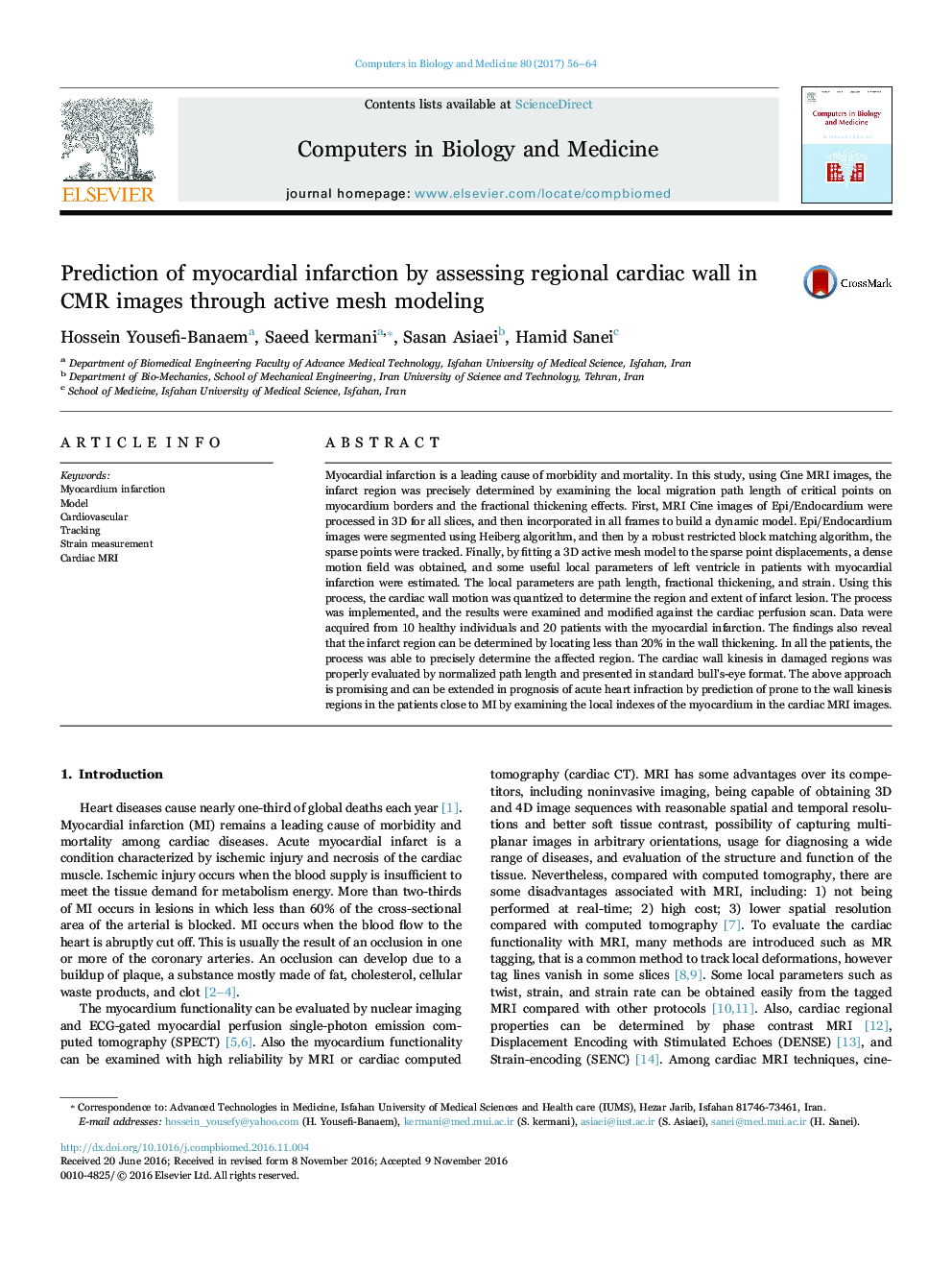| Article ID | Journal | Published Year | Pages | File Type |
|---|---|---|---|---|
| 4965010 | Computers in Biology and Medicine | 2017 | 9 Pages |
â¢Detection of infarcted regions in patients with myocardial infarction.â¢Strain analysis of myocardium in healthy individuals and infarct patients.â¢Cardiac wall kinesis evaluation by normalized path-length of cardiac wall points.â¢Introducing fractional wall thickening as a feature for infarct region and infarct heart detection.â¢Evaluation of cardiac functionality between the systole and diastole phase in the healthy individuals and infarct patients.
Myocardial infarction is a leading cause of morbidity and mortality. In this study, using Cine MRI images, the infarct region was precisely determined by examining the local migration path length of critical points on myocardium borders and the fractional thickening effects. First, MRI Cine images of Epi/Endocardium were processed in 3D for all slices, and then incorporated in all frames to build a dynamic model. Epi/Endocardium images were segmented using Heiberg algorithm, and then by a robust restricted block matching algorithm, the sparse points were tracked. Finally, by fitting a 3D active mesh model to the sparse point displacements, a dense motion field was obtained, and some useful local parameters of left ventricle in patients with myocardial infarction were estimated. The local parameters are path length, fractional thickening, and strain. Using this process, the cardiac wall motion was quantized to determine the region and extent of infarct lesion. The process was implemented, and the results were examined and modified against the cardiac perfusion scan. Data were acquired from 10 healthy individuals and 20 patients with the myocardial infarction. The findings also reveal that the infarct region can be determined by locating less than 20% in the wall thickening. In all the patients, the process was able to precisely determine the affected region. The cardiac wall kinesis in damaged regions was properly evaluated by normalized path length and presented in standard bull's-eye format. The above approach is promising and can be extended in prognosis of acute heart infraction by prediction of prone to the wall kinesis regions in the patients close to MI by examining the local indexes of the myocardium in the cardiac MRI images.
Graphical abstractDownload high-res image (344KB)Download full-size image
